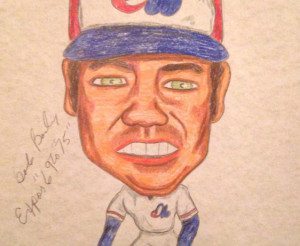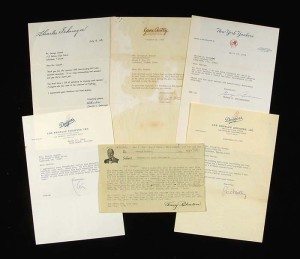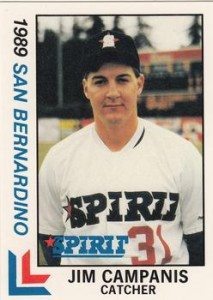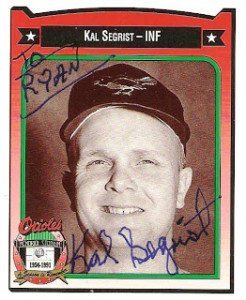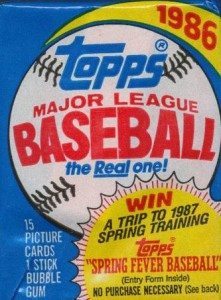 Imagine the hurler on the mound unafraid of telling you what pitch is coming.
Imagine the hurler on the mound unafraid of telling you what pitch is coming.
That’s Brad Balukjian. As he criss-crosses America seeking 13 men who appeared in his 1986 Topps wax pack, the author still made time to share his game plan.
I mentioned Brad’s epic project in an earlier blog post. Since then, I see many others are seeking him out on Twitter, Instagram and his website.
Brad used online databases, collector sites and the Harvey Meiselman Baseball Address List to locate his 13 wax pack acquaintances. His two-page letter detailed the whole project, offering a link to the website that noted his many articles (including the sports features for the Los Angeles Times).
One former player didn’t respond. Brad got crafty, and grabbed some old media guides from the 1980s. This man’s wife was noted as a teacher. One e-mail to the woman brought a response from her ball-playing husband.
Brad’s TTM pursuits gave him insights about collecting. “The men I’ve met honor by-mail autograph requests,” he surmised. “Some will save up letters for a couple of months, then answer everyone on a Saturday.”
On an early Tweet, Brad photographed some envelopes from Jaime Cocanower. One had “Donation Enclosed” inscribed, with $2 in cash inside.
“He just laughed,” Brad said. “I don’t think he signed because of that.”
After several meetings with retirees, Brad added, “They seem suspcious when a letter has 5 or 6 cards. They think you’re going to sell the autographs.” For a persuasive letter, Brad advised keeping it simple, no more than a page. “Don’t be too cute. Be yourself.”
Brad said he discovered a “bit of a disconnect” in his first meetings. “How these men view their careers isn’t as romantic as we might think,” he said. “They are not that guy any more.” Brad’s meetings are detailing some of the struggles and life changes each man faced after retirement.
“In some ways,” Brad added, “I don’t even consider this a baseball book.”
I found Brad by phone in Naples, Florida. He was fresh from a meeting with Don Carman, his childhood hero. The pair played catch before Brad hit the road again.
“When I was nine years old, I went to the pharmacy and bought Don a birthday card,” Brad remembered. “I never got a response, but I didn’t know about a self-addressed, stamped envelope back then.”
The pair joked about Carman’s admission that he found a shoebox of fan mail some 20 years later. “I wanted him to find a shoebox with my birthday card, too.” Brad said.
Carman confided to Brad that he found a new appreciation for baseball cards after retiring. “He said he could never master a change-up in his career,” Brad said. “After retiring and coaching, Don said he learned the grip by studying baseball card photos.”
Don’t fear Brad going silent when his road trip ends. To keep his readers-to-be ready for the book’s 2017 release, he says he’s considering podcasts. Conversations with other former players.
Yes, others depicted in the 1986 Topps set.
Once the book is out, I hope Topps will reward Brad with his own card. He’ll be one autograph worth waiting for.


